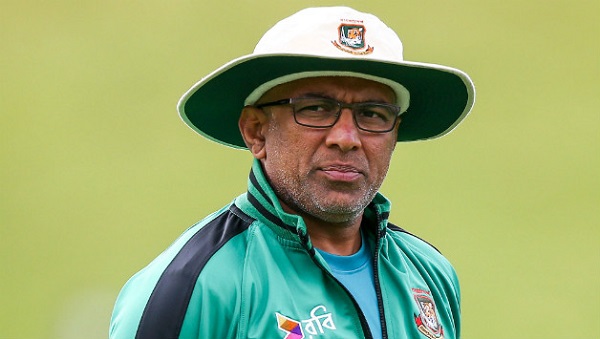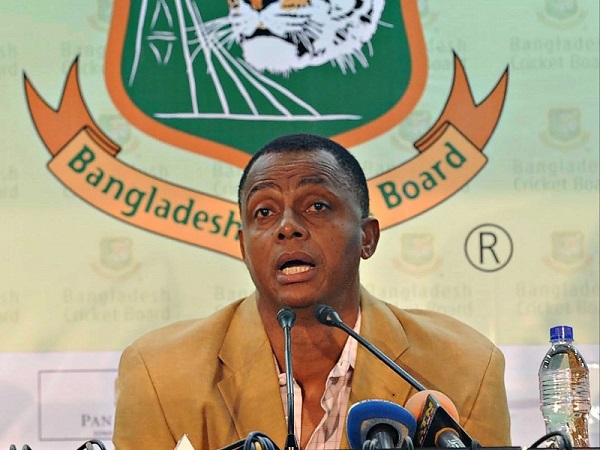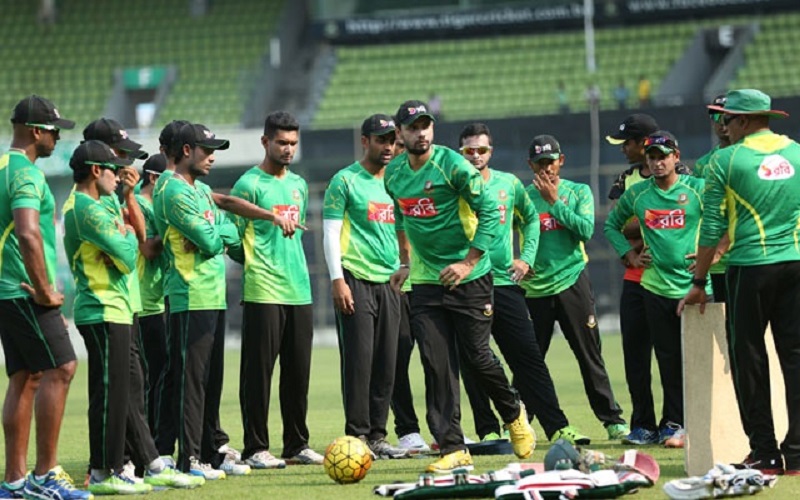Written by: Atif Azam
The most sought after question in the home of Bangladesh cricket at the moment is who will be our next coach.
Bangladesh cricket is certainly going through a transitional period and the unexpected departure of head coach Chandika Hathurusingha definitely has a lot to do with it.
The Bangladesh Cricket Board is keenly working to rope-in a high-profile head coach for the team as the successor of Chandika, who is regarded as the most successful foreign coach hired by the board.
Only time will tell whether BCB will manage to get the services of someone who will fulfill all their requirements. Hopefully whoever the chosen one ends up being, can device a plan of action that will help the national team continue their momentum and move forward in the upcoming days.
Foreign coaches have always remained a central figure in the national team during our journey from the beginning. And more often than not, the board has always backed their head coach and trusted their wisdom, without raising any questions until it was time to part ways.
Since the unexpected resignation of Hathurusingha, several names have popped up to be his likely successor. The list included Andy Flower, Gary Kirsten, while Phil Simmons and Richard Pybus had appeared in person for being interviewed before both decided to join elsewhere.
It is all but certain that both candidates failed to fulfil the entire criterion required to be the head coach. But at the same time, BCB is also considering the fact that in the present context, it is nearly impossible to get someone who covers all the bases that is set by BCB as imperative for them.

Filling the hole: Chandrika Hathurusingha has had immense contribution behind Bangladesh’s recent successThe only experience our interim head of the team has is managing tbe West Indies Under-19 team as well as being the bowling consultant for the Jamaica Tallawahs in the Caribbean Premier League. And prior to arriving in Bangladesh on September 2016, he was member of the national selection panel of West Indies.
“It is quite difficult to get a reputed head coach in such short time,” BCB chief executive Nizamuddin told ICE Today, while trying to explain the present scenario existing in the cricket world.
“Most of them are engaged with various franchises, based on T-20 competition, while the others are occupied with respective international teams. So it is not going to be very easy to find someone with a high profile background,” he explained.
“We are trying, and if we fail to rope someone big, then we will have to look for other alternatives as there are some really talented coaches working at club level in England and Australia,” he added. Traditionally, we are not known for hiring club-level coaches but since our backs are against the wall this time, that tradition might finally be broken.
The helm is being overlooked by West Indian Legend Courtney Walsh who joined as our bowling coach in September 2016. A name that needs no introduction, Walsh is one of the most decorated bowlers in history. However, as seen in the past good players don’t necessarily make good coaches. In addition to that this is Walsh’s first stint as a coach.

It was also quite shocking to learn that Richard Halsall was given an extended leave and the team would not have him in the Nidhas Cup, despite being the front-runner to be the best contender to fill Hathurusinghe’s shoes.
Halsall was deputy of Sri Lanka during his stint with Bangladesh, and with a level-four coaching degree that even Hathurusinghe could not avail. So far, he was looking more capable to take up the responsibility.
But the BCB was in no mood to compromise and instead, insisted that they will go without a head coach in their just concluded home series and opted to introduce Khaled Mahmud in the hot seat, with the appropriate title of team’s ‘coaching director’.
However, it did not last long, as he failed to deliver. And according to former national chief selector Faruk Ahmed, it was still unclear what the criteria was for the position of head coach.
“I feel we prefer to go for a well-known name instead of judging him by his potential as a cricket coach and areas of his expertise,” Faruk said. “This trend can be followed by a developed cricket nation as they have a strong structure in place and whoever enters that national team goes through it.”
“But for us, we need to consider whether the man at the top has the ability to find out technical problems of a cricketer, instead of just being some sort of a motivator, gracing the national dressing room by his presence,” he added.
The BCB has to be clear with the next coach as far as defining boundaries are concerned. Giving him a free reign when the team is tasting success and later holding him liable for all failures, would not only be counterproductive for the team but would also show the BCB as an unprofessional organisation.
The BCB perhaps needs to get better at handling its coaches or needs to find one that handles them well enough to not cause a rift. Therein lays a small problem. For a foreign coach to understand how Bangladesh cricket works, and the hierarchy system within, would take time and significant effort.
Despite previous coaches finding some success in the past, it hasn’t always ended merrily for either party. That problem could be solved with a local coach, one who has no problems interacting with players and understanding how the board functions. But does Bangladesh have such a person to call upon? One who can not only push Bangladesh cricket to the next level, but also earn enough respect from within the dressing room to become a long-term presence.

